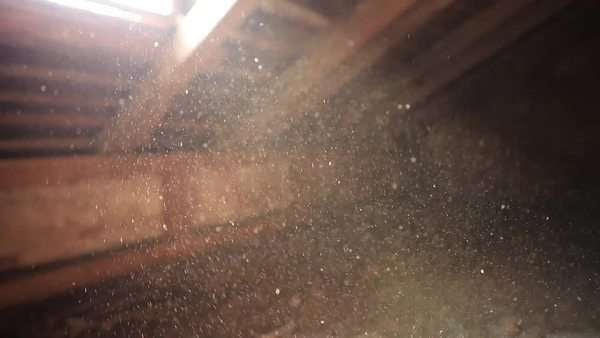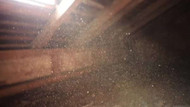Managing Dust Mites
Feb 17th 2020
How to Reduce Symptoms of Dust Mite Allergies
Dust mites are microscopic organisms that feed on skin cells and live, well, everywhere - especially in your bedding, carpet, furniture, and other warm and humid places. Luckily, they’re nearly impossible to see with the naked eye, because honestly, they’re super gross. A relative of the spider, they look like something that belongs in a horror film. So how should homeowners manage these microscopic mites? Keep reading for advice on determining whether you have a dust mite problem, and how to get rid of them.
Because dust mites are microscopic and cannot easily be seen with the naked eye, it’s important to know the signs of their presence. The most common sign of dust mites in your home may be your body’s reaction to them. If you happen to be allergic to dust mites, you’ll likely experience cold-like symptoms such as a runny nose, itchy eyes, sneezing, coughing, and congestion. If you have asthma, your symptoms may be more pronounced. If you don’t have dust mite allergies, and you’re really curious, you’ll need a microscope to find them. With an inexpensive hobby microscope, and a small sample of dust from your furniture collected on a piece of clear tape, you can conduct a mini science experiment to identify them. Look for a creature similar to a spider or a cockroach, but translucent - they’re hard to miss!
Before we get started with tips about how to get rid of dust mites, it’s important to understand that you’ll never be able to eliminate them completely. You can, however, reduce their population significantly, improving the health of your home, with the following steps.
Decrease Humidity: Dust mites love humidity, and it is crucial for their survival. A dehumidifier is a great way to reduce the humidity in your home, and make it less hospitable to dust mites. As an added bonus, it also reduces mold and other fungi.
Manage Carpeting: Wherever possible, remove soft surfaces. Surfaces covered in carpet are predisposed to dust mites because of how well they collect dust and skin cells. While this is an expensive option, it can be very helpful in extreme allergy cases. If you need carpet, try to get low-pile carpet, as it’s easier to clean.
Vacuum and Dust: Whether or not changing or removing your carpeting is an option, be sure to vacuum regularly. Dust with a damp cloth at least once a week to keep these dust mites out of the air and your home. Perform a thorough cleaning of your carpet and other fabrics in your home with a HEPA vacuum cleaner. Look for vacuums designed to manage pet hair, as these typically come with the HEPA filter you want. A normal vacuum filter will help, but a HEPA filter is the best option to remove such small allergens.
Wash Bedding: While you’re performing your weekly dust and vacuum, be sure to throw your bedsheets, pillow cases, and covers on hot. Look for an allergy-targeting laundry detergent to best remove mites. While the bed is stripped and the vacuum is out, sprinkle baking soda on your mattress, then vacuum. This can rid an infestation at one of the most common sources.
Filter Air: Disturbing fabrics can result in sending dust mites into the air you breathe. Falling into bed, shuffling across your carpet, or even simply sitting down can set off an allergic reaction. Be sure to use a decent air filter, rated as a MERV 8 at least, or a MERV 11 if you can. This will help eliminate dust mites, preventing them from cycling back into your home
Even if you aren’t allergic to dust mites, they can make you itch just thinking about them. Work these simple steps into your routine to purify the air in your home, and keep the air you breathe fresh and healthy.



